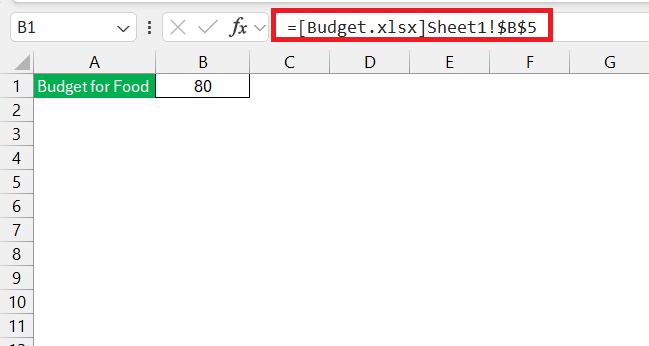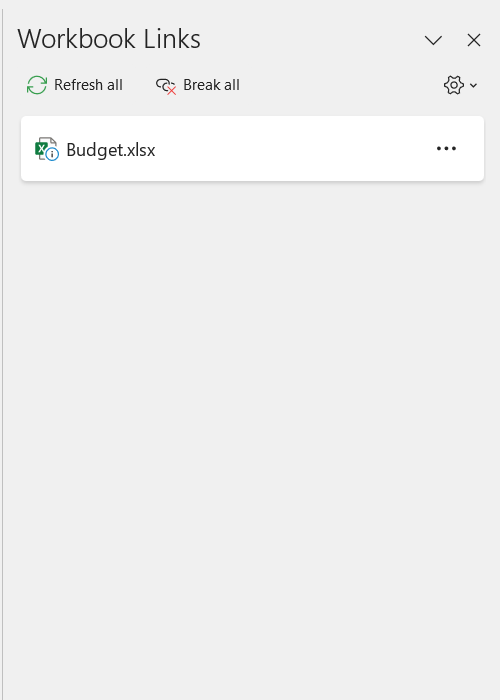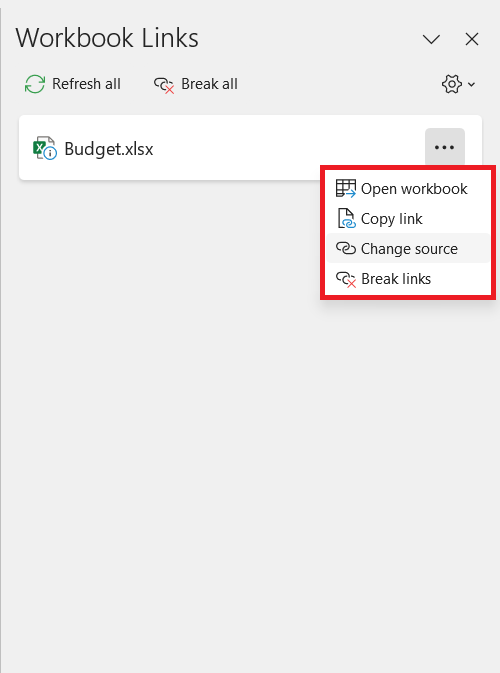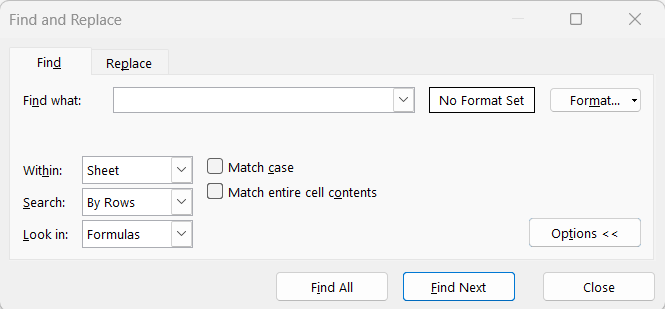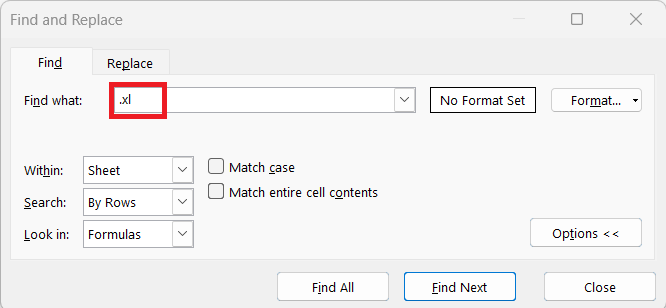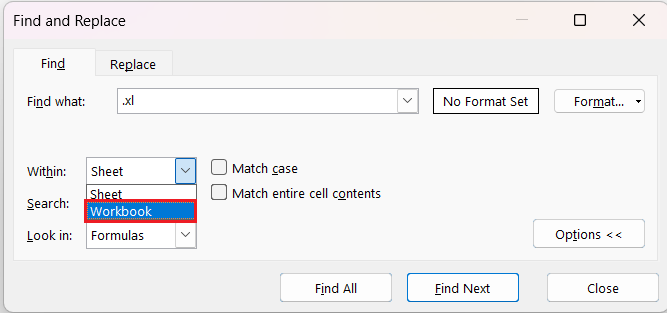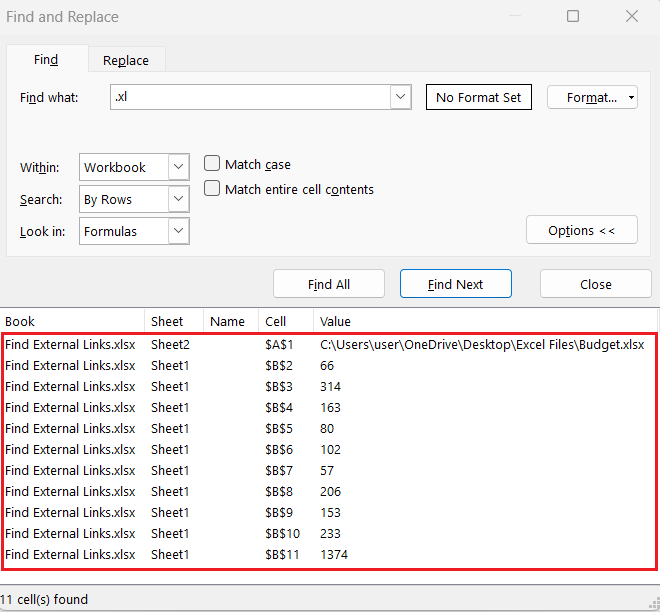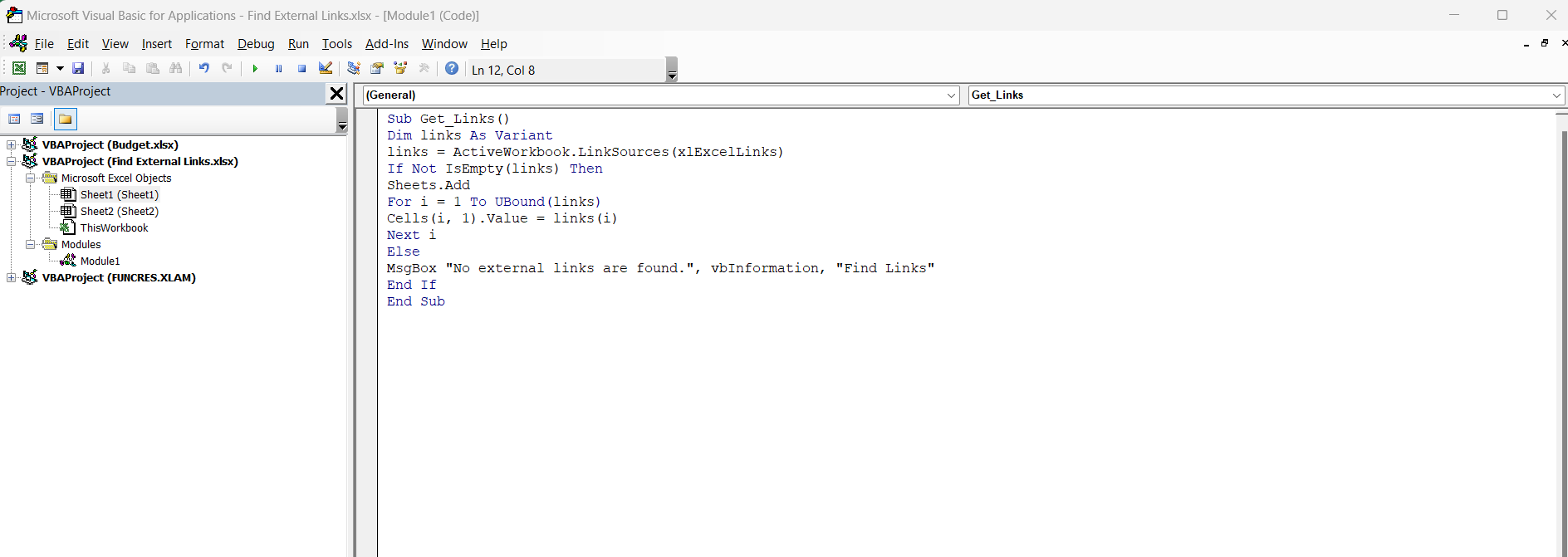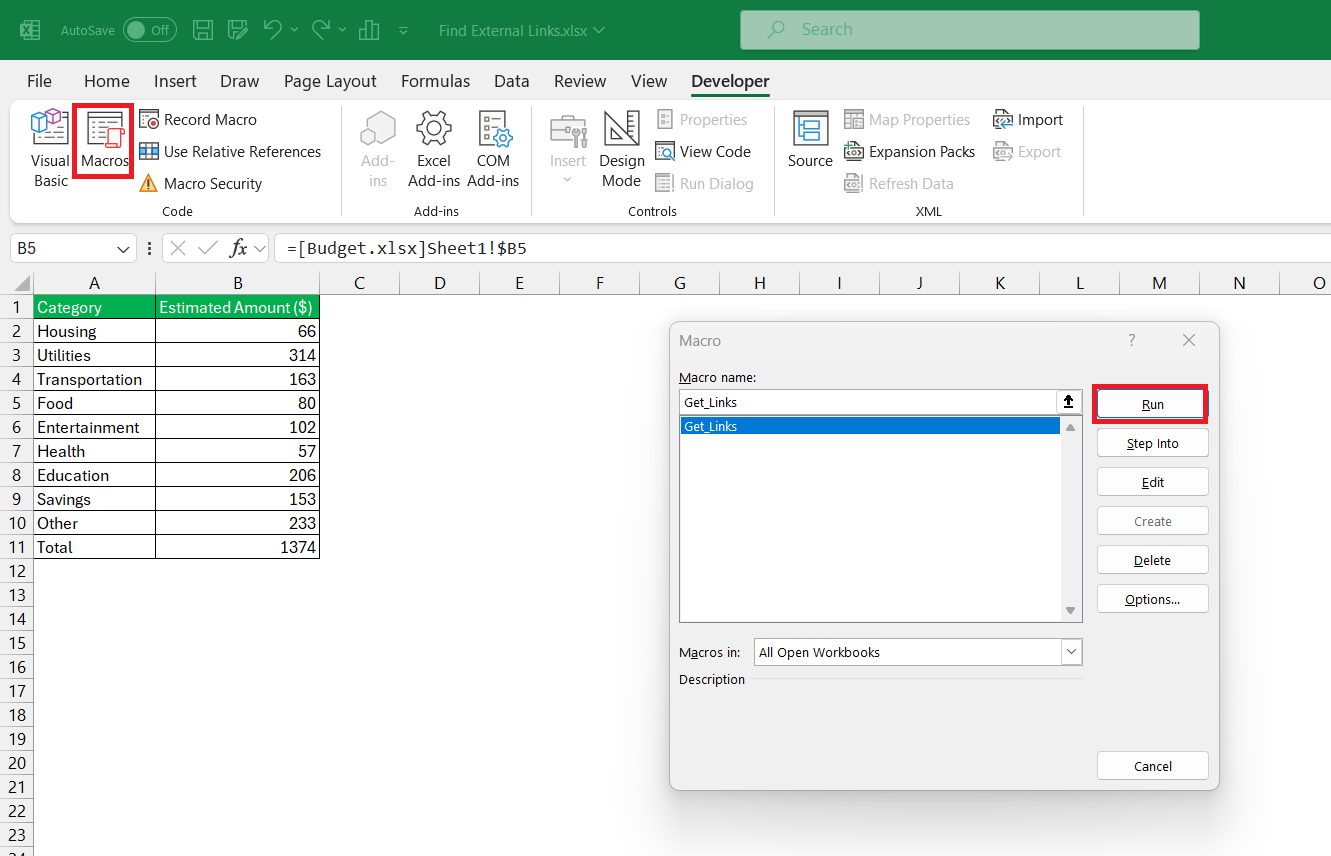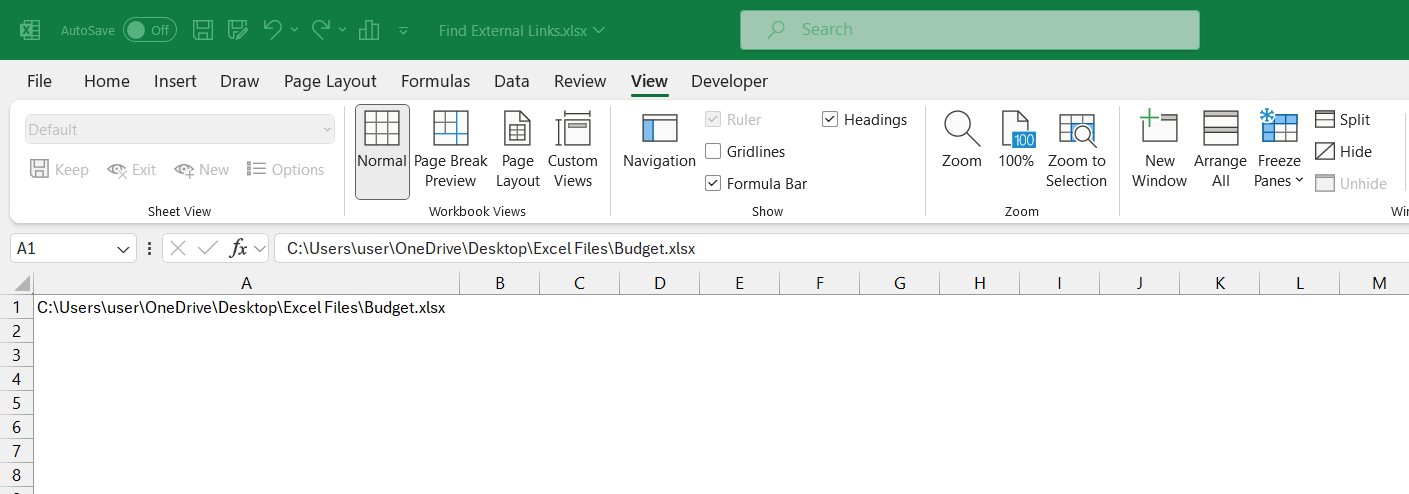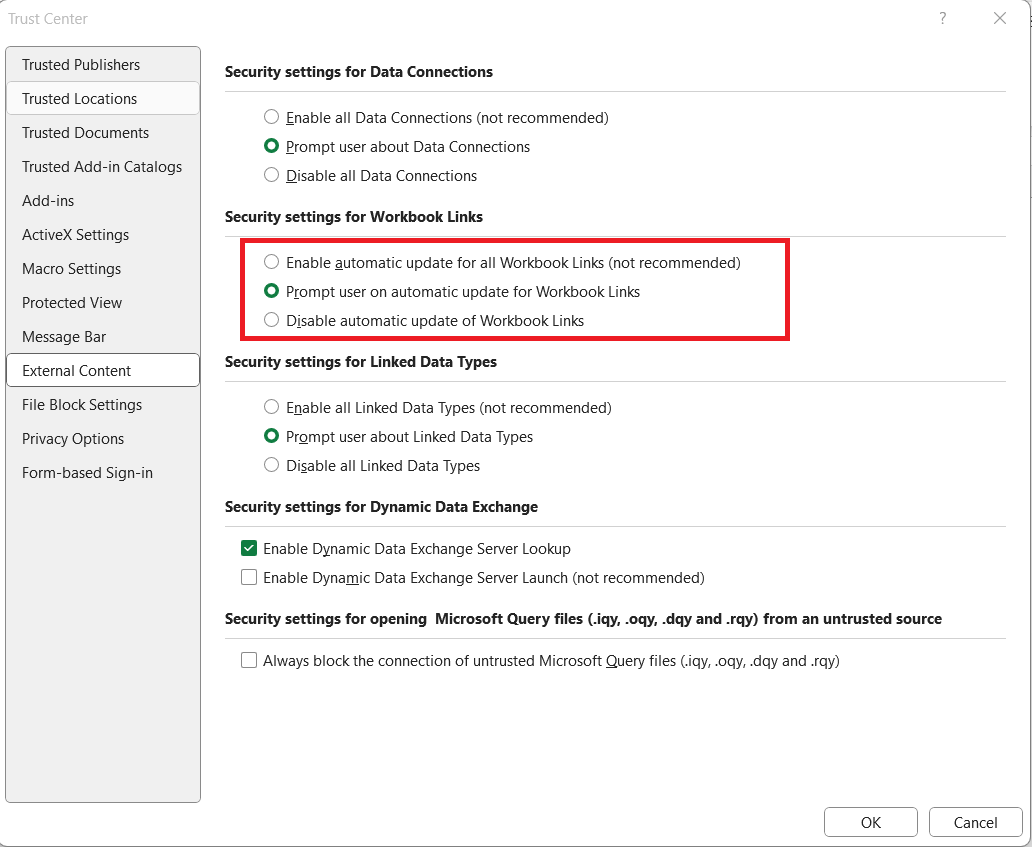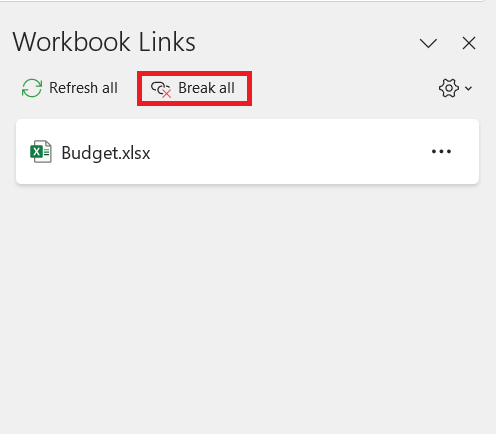

Key Takeaways:
- Excel’s external links connect data across workbooks, fostering dynamic, interconnected spreadsheets. Mastering these basics empowers users to leverage external links effectively.
- Properly managing external links maintains data integrity and enhances collaborative efficiency. Tracking and updating links mitigates errors and ensures spreadsheet accuracy.
- Excel’s external links mainly appear as workbook references, encapsulating source workbook paths and specific cell or range access. Recognizing these structures facilitates effective navigation and manipulation.
- Excel offers diverse methods, such as the ‘Edit Links’ dialog, ‘Find and Replace’ function, and VBA macros, to uncover external links. Leveraging these tools ensures efficient link identification and management for reliable data accuracy.
Table of Contents
Introduction to External Links in Excel
Understanding the Basics of External Links
When you’re juggling data across various files, external links in Excel are like the bridges connecting them all. Simply put, these links allow you to reference cells in other workbooks, meaning data can be dynamically pulled from multiple sources into your current sheet.
The Importance of Managing External Links
Keeping track of external links is crucial for maintaining the integrity of your spreadsheets. When you manage these links effectively, you’re ensuring that the data displayed is current and correct. It’s especially important if you’re sharing workbooks with colleagues because you want to ensure everyone’s working with the latest figures and insights, reducing the risk of errors and confusion.
Proper management of external links also enhances security since outdated or broken links may pose risks or lead to data loss.
Workbook References and How They Work
Workbook references are at the heart of Excel’s external linking capability, functioning by pointing to data in different files. When you create a formula that includes a reference to another workbook, you’re essentially telling Excel, “Hey, go fetch the data from this specific location.” This process is streamlined because Excel stores the path to the source workbook along with the cell or range you want to access.
The structure of a workbook reference typically includes the workbook name, the sheet name, and the cell reference, encapsulated within square brackets and followed by an exclamation mark. For instance, =[Budget.xlsx]Sheet1!$B$5 would tell Excel to pull data from cell B5 on the ‘Sheet1’ sheet within the ‘Budget.xlsx’ workbook.
Step-by-Step Guide to Find External Links in Excel
Using the ‘Edit Links’ Dialog Box Effectively
The ‘Workbook Links’ dialog box in Excel is where you face the web of workbook connections upfront. Here’s how you can wield this feature like a pro:
- Start by opening the ‘Workbook Links’ command, now housed under the Data tab in the Excel ribbon.
- In the dialog box, you will see the workbooks linked in the Excel file.
- You’re then equipped with several options:
- Open Workbook: This option allows you to directly open the workbook that your current workbook is linked to. It’s useful when you want to view or edit the source data directly.
- Copy Link: This option will simply copy the link present in the workbook.
- Change Source: This option can be used to redirect a link to a new workbook
- Break Link: This option can be used to sever the connection and convert formulas to static values.
Remember, being thorough is key. Ensure you pay attention to the status of each link, which tells you whether the link is okay, whether there are issues in accessing the data, or whether it’s simply unknown or not accessible.
Find and Replace Method for External Links
If you’re on a hunt for hidden external links, the ‘Find and Replace‘ function is your trusty sidekick. It’s a straightforward method, and here’s how you unfold its power:
STEP 1: Press Ctrl + F to summon the ‘Find and Replace’ dialog box, then click on ‘Options’ for more control.
STEP 2: In the ‘Find What’ field, enter the wildcard string “.xl”, which tells Excel to look for anything that smells like a workbook link.
STEP 3: Make sure ‘Within’ is set to ‘Workbook’ so that your search is comprehensive, scanning every nook and cranny of your file.
STEP 4: Click ‘Find All’, and voilà, a list of all external links will magically appear.
Don’t forget, Excel may take a while to complete the search if your workbook is a hefty one, so a bit of patience might be needed. Once you have the list, you can review and manage these links as necessary.
Employing VBA Macros to Identify Links
Delving into the land of VBA macros can be quite an adventure when trying to identify external links in Excel. The right macro can act as a powerful diagnostic tool that sweeps through your workbook, listing every external crumb it finds.
For instance, a simple macro like this can get the job done:
Sub Get_Links()</div><br /> <div class="ql-code-block" data-language="plain">Dim links As Variant</div><br /> <div class="ql-code-block" data-language="plain">links = ActiveWorkbook.LinkSources(xlExcelLinks)</div><br /> <div class="ql-code-block" data-language="plain">If Not IsEmpty(links) Then</div><br /> <div class="ql-code-block" data-language="plain">Sheets.Add</div><br /> <div class="ql-code-block" data-language="plain">For i = 1 To UBound(links)</div><br /> <div class="ql-code-block" data-language="plain">Cells(i, 1).Value = links(i)</div><br /> <div class="ql-code-block" data-language="plain">Next i</div><br /> <div class="ql-code-block" data-language="plain">Else</div><br /> <div class="ql-code-block" data-language="plain">MsgBox "No external links are found.", vbInformation, "Find Links"</div><br /> <div class="ql-code-block" data-language="plain">End If</div><br /> <div class="ql-code-block" data-language="plain">End Sub
Go to the “Developer” tab on the Excel ribbon. Within the “Developer” tab, click on “Visual Basic” to open the VBE and write the code –
Just insert this VBA script into Excel’s Visual Basic Editor, run it, and before you can say “spreadsheet superhero,” you’ll have a neat list of all the external links present in your workbook.
The list will be displayed in the new worksheet.
Keep in mind, that VBA might feel intimidating if you’re new to it, but with a bit of practice, you’ll be automating tasks and performing Excel magic in no time. Remember to always make a backup of your workbook before running macros, to prevent any unintended changes to your data.
Troubleshooting Common Issues with External Links
Resolving Security Warnings and Update Prompts
Those pesky security warnings and update prompts in Excel might make you want to pull your hair out, but fear not. They’re simply there to alert you of potential risks and to ensure you’re aware of content updates. Here’s what you can do:
To manage these prompts, navigate to the ‘Edit Links’ dialog box. Excel gives you a few options under ‘Startup Prompt’: let users choose, don’t display the alert, or update links without showing the alert. Choose the one that’s right for your situation, such as disabling them if your colleagues don’t have access to source files or keeping them enabled to maintain data accuracy.
Also, consider tweaking the Trust Center settings. Go to File > Options > Trust Center > Trust Center Settings… > External Content. There, you can enable settings that fit your security preferences and control when Excel updates links.
Remember, Excel will always notify you if there are broken links with an error message. So, keep a lookout for these warnings, as they may indicate problems that need immediate attention.
What to Do When Not Connected to the Source?
When you can’t connect to your external data source, don’t hit the panic button just yet. Here are a few steps you can take to smooth things over:
- Consider reconnecting to your network if it’s a connectivity issue. Sometimes, the simplest solution is the fix.
- Use ‘Edit Links’ under the Data tab to identify the source of your woes. If you’re dealing with a moved or renamed file, use the ‘Change Source’ option to relink to the correct path.
- If the source is irretrievable, consider breaking the link and converting the linked data into static values with the ‘Break Link’ button. This will maintain your data’s last updated state without the dynamic link.
And if you’re a planning enthusiast, avoiding this hiccup could be as simple as placing all related files within a shared, accessible location like a company server or cloud storage before beginning your project.
FAQs
What are external links in Excel?
External links in Excel are references in a spreadsheet that pull data from a different workbook. These include formulas, defined names, or data used in charts and pivot tables which are hosted in another file, allowing you to use and display dynamic, updated information from various sources within your Excel sheet.
How to find all external links in Excel?
To unearth all external links in Excel, use the ‘Edit Links’ tool found under the Data tab or employ the ‘Find and Replace’ feature by hitting Ctrl + F, typing “.xl” in the ‘Find What’ box, selecting ‘Workbook’ and ‘Formulas’ in the respective areas, and then clicking ‘Find All’ to see a list of these connections.
How Can I Ensure My Workbook Links Update Automatically?
To ensure your workbook links in Excel update automatically, choose Data > Queries and Connections > Workbook Links, and then select ‘Always refresh’ from the Refresh settings. This setting will auto-update all links every time you open the workbook without prompting users.
Is There a Way to Locate External Links from a Specific Source?
Yes, to locate external links from a specific source, employ the ‘Edit Links’ dialog in Excel, which will display a list of all linked sources. Alternatively, use the ‘Find and Replace’ feature with the specific file name or part of the path to search within formulas across the workbook.
How do I show external Data connections in Excel?
To show external data connections in Excel, go to the Data tab, click on “Connections” in the ‘Queries & Connections’ group, and you will see a list of all the data connections, including those linked to external sources, used in the workbook.
John Michaloudis is a former accountant and finance analyst at General Electric, a Microsoft MVP since 2020, an Amazon #1 bestselling author of 4 Microsoft Excel books and teacher of Microsoft Excel & Office over at his flagship MyExcelOnline Academy Online Course.

